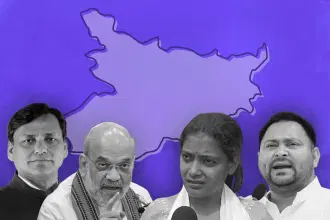Politics
Exposing Rahul Gandhi's 'Jhooth Ki Dukaan' And Baseless War On Indian Democracy
Urvashi A and Minaxi
Aug 12, 2025, 02:34 PM | Updated 03:03 PM IST
Save & read from anywhere!
Bookmark stories for easy access on any device or the Swarajya app.
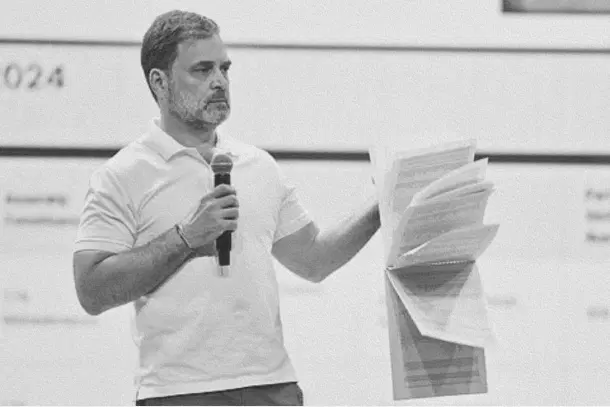
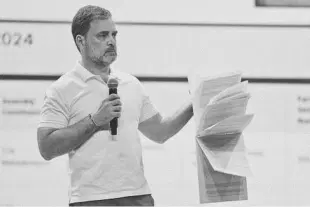
On the stage of Indian politics, an overly twisted theatrical drama is unfolding.
The protagonist of the drama, Rahul Gandhi, has conjured up what can only be called ‘bogus’, not just against the Central Government, but against the very institution responsible for upholding the integrity of the world's largest democracy.
Strangely, the hoax he claims to be solid evidence was not presented before a court of law; instead, it was used to create a national public spectacle.
This approach raises a fundamental question: when the ‘Crown Prince of India’s Grand Old Party’ pushes his case directly to the public, is he seeking justice or refusing to accept his own inability to win elections?
Two States, One Story: Allegations That Do Not Add Up
On 7 August, Rahul Gandhi held a grandly titled press conference, “Vote Chori”, where he rolled out a laundry list of sensational claims against the Election Commission of India (ECI).
He painted routine electoral processes as a national crisis by cherry-picking data. But all he really proved was how easily facts can be bent to fit a narrative.
One would think the heir to India’s Grand Old Party would at least check basic information before making such a charge.
Voter additions between General and Assembly Elections are not some unforeseen anomaly but a routine feature of the democratic process. In 2004 and 2009, the jump was similar at 4.7% and 4.1%, and the UPA happily claimed the victory.
But in 2024, when the increase is only 4.4%, it is suddenly a scandal. So now, it seems that more people stepping up to vote is not a sign of a healthy democracy anymore.
Our democratic institutions have always strived to provide the most accurate number, but dismissing corrective statistical processes with a simple headline of “Vote Chori” undermines democracy.
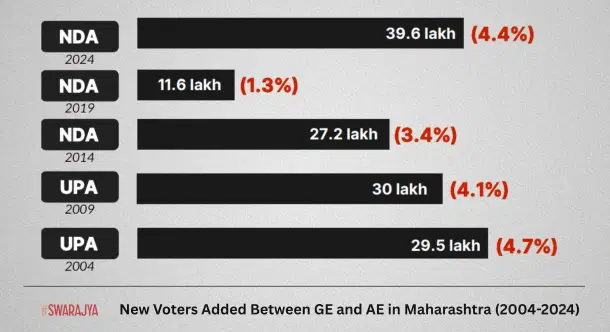
The Maharashtra Canard
Rahul Gandhi’s first charge was that Maharashtra’s voter rolls showed a sudden spike in fake or duplicate entries.
The “proof” for the charge was: “Maharashtra’s adult population is 9.54 crore but the voter list shows 9.7 crore.”
But where exactly did he get this 9.54 crore figure from? Every population estimate, including the government’s own, is only as credible as the fundamental assumptions and logic used to arrive at it.
In such a state with dynamic demography, projecting the exact number of electors is complex by nature. But instead of accepting this reality, Mr Gandhi spins statistical guesswork into suspicion.
There is no inherent logic to Rahul Gandhi’s accusation because his party members created this number behind closed doors to justify their loss instead of introspecting why the people of India rejected their divisive narratives.
It seems Mr Gandhi’s voter-roll outrage is nothing more than post-election theatre.
Eight months after the polls, he suddenly “discovers” fraud, yet on election day, not a single Congress agent in the entire state flagged any irregularity.
Every one of them quietly signed Form 17C, the official booth-wise turnout record, without a murmur. No complaints. No petitions. Nothing.
His so-called “late surge in turnout” collapsed in contact with the truth: before 5 PM, voting averaged 58 lakh an hour; after 5 PM, it dropped to 32.5 lakh, hardly the suspicious ‘spike’ he is trying to sell.
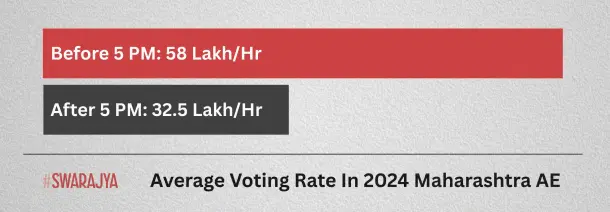
The dangers of the controversial charges are clear. Rahul Gandhi is not just misrepresenting the facts, he is misrepresenting the law itself.
He asks why CCTV footage is being erased, but the answer lies in a rule written by his own party.
Under the Representation of the People Act, 1951, crafted during Congress’s time in power, electoral footage cannot be released freely.
This protects voter privacy and prevents misuse, especially in sensitive areas like Naxal-hit regions and Kashmir. Every candidate, from every party, has the right to request it, but not a single Congress candidate did so.
The footage is stored for 45 days, and access is only granted by a judicial order. Congress slept through this process and now has turned around to attack the Election Commission.
The Nataka in Karnataka
Rahul Gandhi’s accusations against the ECI, made from the media spotlight, crumbled the moment the ECI called his bluff.
In Karnataka, when the ECI simply asked him to sign a declaration to stand by his own words, his silence was deafening.
Also, his “BJP stronghold” claim for Mahadevapura falls apart, as BJP’s lead in Bangalore Central came not just from Mahadevapura but from CV Raman Nagar, Gandhi Nagar, and Rajaji Nagar, segments where BJP’s vote share far outpaced Congress.
Meanwhile, Congress led in four other segments: Sarvagnanagar, Shivaji Nagar, Shanti Nagar, and Chamarajpet.
As usual, Congress chose to ignore facts to further its political narrative and conveniently blame the EC simply because BJP secured the seat.
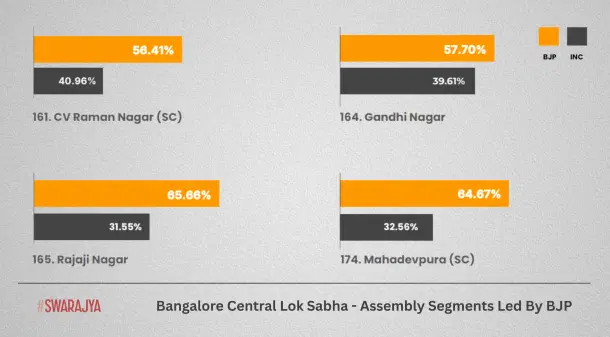
In an embarrassing turn of events for Rahul Gandhi, the biggest shocker was when his own party’s minister, K. N. Rajanna, exposed the hypocrisy of his party's stance.
While Gandhi was busy targeting the ECI, Rajanna admitted that the very issues he decried, such as duplicate entries, were not only rampant but went unchecked during Congress's own time in power, which Mr Gandhi obviously had nothing to say about.
To no one's surprise, just a few hours after daring to speak against the Gandhi family, Minister Rajanna resigned from his post. Although he chose to resign voluntarily, the timing speaks volumes.
The Real Motive: Unmasking Congress's Strategy of Minority Consolidation
Rahul Gandhi’s allegations over “bogus voters” are only levelled when he loses, but he conveniently chooses to turn a blind eye when dubious rolls deliver him a victory.
From Karnataka to Maharashtra, his own strongholds reveal the real fraud behind his selective outrage.
A Tale of Two Constituencies (Shivaji Nagar and Chamarajpet)
In Karnataka’s Bangalore Central constituency, the Congress party’s strongholds tell their own story.
Shivaji Nagar and Chamarajpet have been flagged for alleged duplicate voter entries, with the same individuals appearing in multiple wards within the same assembly segment.
These irregularities are not isolated instances but suggestive of structural distortions that, when left unchecked, can artificially inflate turnout and skew results.
While Congress points fingers at other constituencies like Mahadevapura, it remains silent about the discrepancies in the very seats that anchor its own victories.
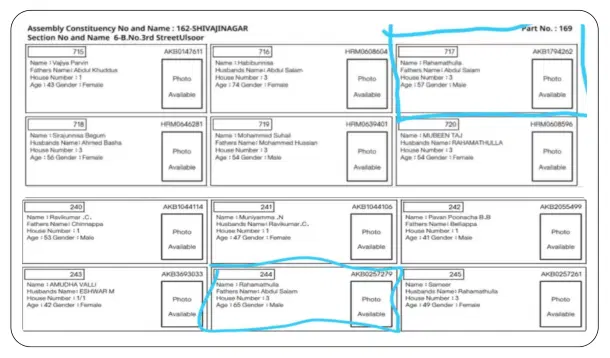
The Dhule Anomaly
Similarly, Maharashtra’s Dhule Lok Sabha seat offers another telling example.
In the 2024 General Election, the BJP led decisively in five of six assembly segments, securing a combined margin of 1.90 lakh votes across those areas.
Yet Congress clinched the seat, not through a broad-based swing, but almost entirely due to its performance in Malegaon Central, a minority-dominated constituency where it recorded 94.52% vote share.
This victory came in a segment rife with alleged electoral irregularities: duplicate voters, missing house numbers for thousands of electors, and an abnormal 43.51% increase in voter numbers since the previous Lok Sabha election.
With Congress’s victory margin in Dhule standing at just 3,831 votes, Malegaon Central’s bloated rolls were the decisive factor in overturning the BJP’s lead elsewhere.
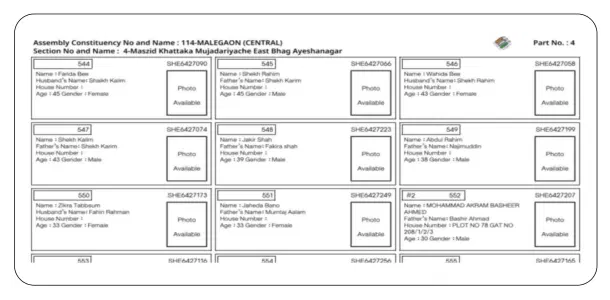
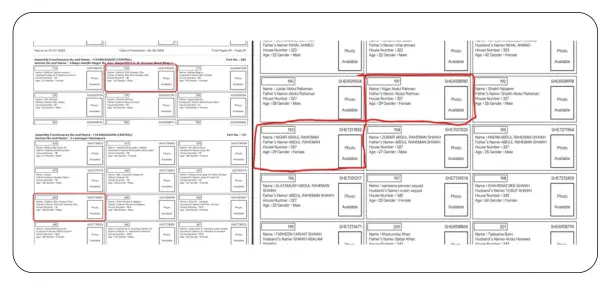
The True Conspiracy
The pattern is clear. By concentrating overwhelming margins in select constituencies where the integrity of the rolls is in question, Congress creates electoral strongholds insulated from genuine competition.
The party’s outrage over “bogus voters” is selective. It vanishes when the irregularities work in its favour.
SIR: The Anti-Fraud Solution That Got Rahul Gandhi Rattled
If Rahul Gandhi were truly committed to eliminating voter fraud, he would be the loudest champion of the State-wide Intensive Revision (SIR) process.
Instead, he has positioned himself as one of its fiercest critics.
The contradiction is glaring: here is a mechanism designed precisely to clean the electoral rolls, yet the party that shouts the loudest about “bogus voters” resists it at every turn.
No Objections, Only Outrage
The Congress maintains a network of over 17,000 Booth Level Agents (BLAs) in Bihar, who are stationed at the grassroots to monitor voter lists and detect irregularities.
The SIR process, by design, invites these agents to flag errors, submit objections, and provide supporting evidence if they believe legitimate voters are being removed or bogus voters retained.
Yet in Bihar’s exhaustive clean-up of 65.2 lakh ineligible entries, not a single formal objection was filed by the INC’s agents.
This silence speaks volumes. If Gandhi’s public claims of “lakhs of bogus voters” were grounded in fact, his party’s agents would have had every opportunity and every incentive to act.
Instead, they stood by as names of the deceased, duplicated, and migrated individuals were struck off the rolls without any protest.
The uncomfortable truth is that the very constituencies most affected by the SIR’s voter list cleansing are the INC’s electoral bastions, areas where inflated rolls have long translated into disproportionate victory margins.
By undermining SIR, the Congress is not defending democracy. It is defending a political advantage built on bloated and unreliable voter lists.
This is why Gandhi attacks the process in press conferences but avoids engaging with it in the field, because the facts on the ground would dismantle the narrative he is trying to spread.
The Bihar Model for Clean Voter Rolls
Bihar stands as the clearest proof that the SIR process is not just theory but a functioning, results-driven tool for verifying India’s voter rolls.
In a comprehensive exercise, election officials eliminated 65.2 lakh ineligible entries from the state’s electoral lists. The clean-up was thorough and methodical:
22 lakh deceased voters were removed.
35 lakh names of individuals who had permanently migrated were struck off.
7 lakh duplicate registrations were identified and deleted.
1.2 lakh entries where no voter registration forms were submitted were discarded.
This was not a one-off sweep but a systematic application of verification protocols through matching voter IDs, cross-checking addresses, and physically verifying doubtful entries.
The outcome is an electoral roll that is cleaner, more accurate, and more resistant to manipulation.
Bihar’s experience proves that SIR works when implemented with rigour.
It is a model of electoral integrity that strengthens democracy by ensuring that every vote cast is a legitimate one.
Far from being a partisan tool, it is a safeguard that any party confident in its popular mandate should welcome without hesitation.
Stop Attacking Our Institutions, Look in the Mirror
Rahul Gandhi’s “election fixing” dangerously mirrors Bolsonaro’s unfounded fraud allegations in Brazil, and deep political division.
This deliberate sowing of doubt culminated in the 8 January insurrection in 2023, where thousands stormed and vandalised Brazil’s Congress, Supreme Court, and Presidential Palace.
The chaos was not driven by proof, but by the controversial narrative that the election must have been stolen.
What must be understood is that Rahul Gandhi’s campaign against the ECI is neither a one-off outburst nor mere petty politics.
It carries far more dangerous implications.
The Congress party’s hostility towards institutions, whether it is the ECI or the Supreme Court, has an unsettling resemblance to the playbook seen in so-called “Colour Revolutions” from Serbia to Georgia, Ukraine to Tunisia.
The script often involves sowing doubts about electoral systems, discrediting election authorities, mobilising street unrest, inviting foreign NGO involvement, and ultimately destabilising elected governments.
Rahul Gandhi’s rhetoric around “Vote Chori”, his resistance to reforms like the SIR, his engagement with USAID during the Bharat Jodo Yatra, and his repeated attempts at mass mobilisation all echo elements of this script.
If electoral malpractice, particularly on the scale of what Gandhi alleges, were at play, the BJP would have no reason to stop short at 240 seats, forcing it to depend on alliance partners.
The now mortifying rallying call of “Abki Baar, Char Sau Paar” would have been a done deal.
Nor would the BJP have reason to meekly accept a razor-thin loss like Himachal Pradesh in 2022, where just around 12,000 votes across 10 seats determined the outcome.
The truth is that the problem lies less in the electoral process and far more in the deliberate erosion of democratic trust, an erosion in which the Congress itself has been an active participant.
The ECI continues to push reforms like SIR and “One Nation, One Election”, yet every such initiative is met with hostility from Congress.
Even the former Leader of Opposition, Adhir Ranajan Chowdhury, suddenly refused to be a part of the High Level Committee on ‘One Nation One Election’ led by former President Ram Nath Kovind, after consenting to the same initially based on the ‘high command’s’ orders.
Tellingly, Gandhi has doubled down on his “Vote Chori” narrative at this very moment, aware that Bihar’s voter roll clean-up could soon hand him yet another political setback.
His greater fear is that, if the process is repeated elsewhere, it could dismantle the very vote bank his party has long relied on.
It is time to call out this “Jhooth Ki Dukaan” for what it is: a calculated assault on India’s democratic institutions.
Citizens, media, and political leaders alike must reject these manufactured narratives, stand firmly by the constitutional bodies that safeguard the republic, and refuse to let politically motivated deception weaken the world’s largest democracy.
Urvashi A is a political observer and a budding lawyer. Minaxi is a political observer and consultant specialising in the policy and political sector.

